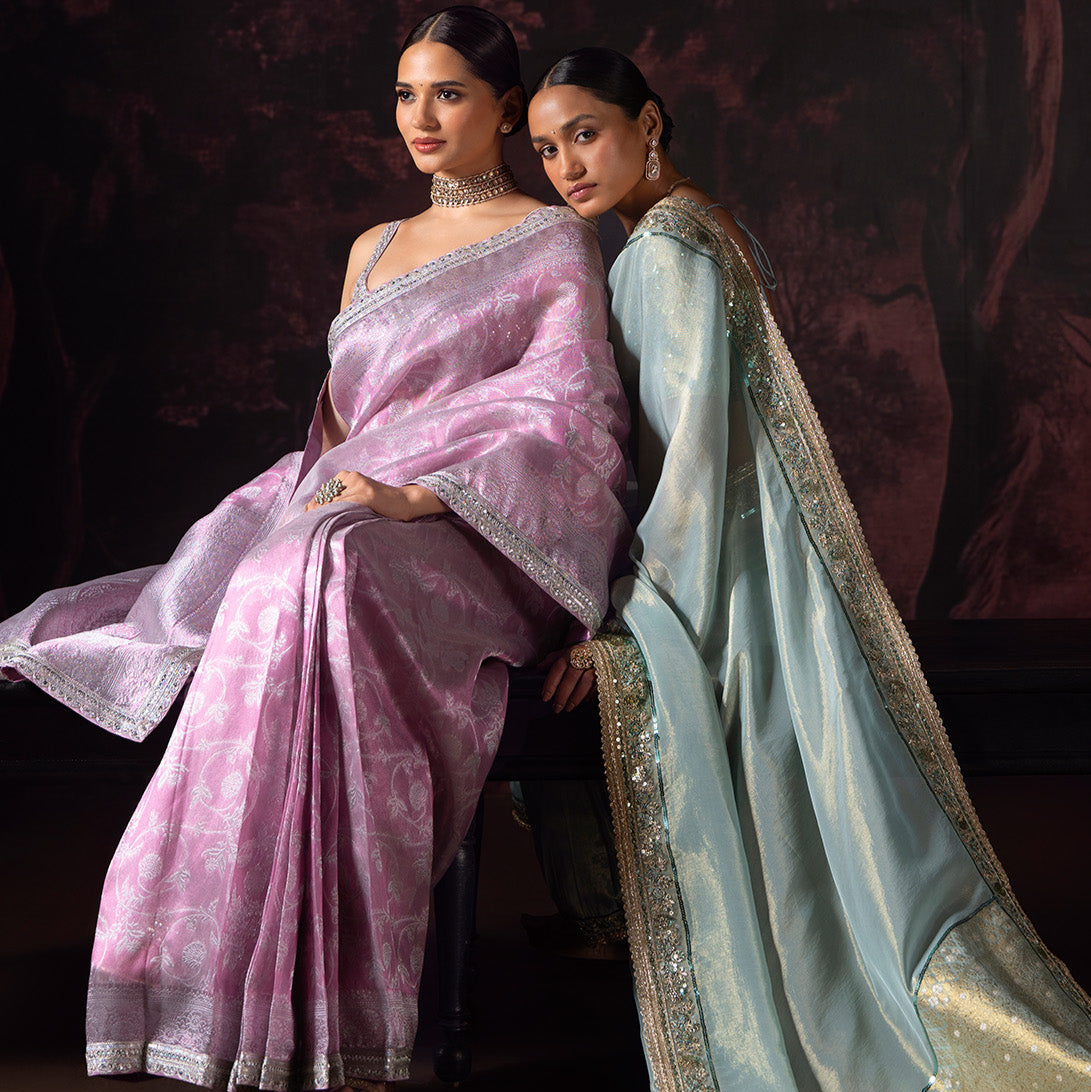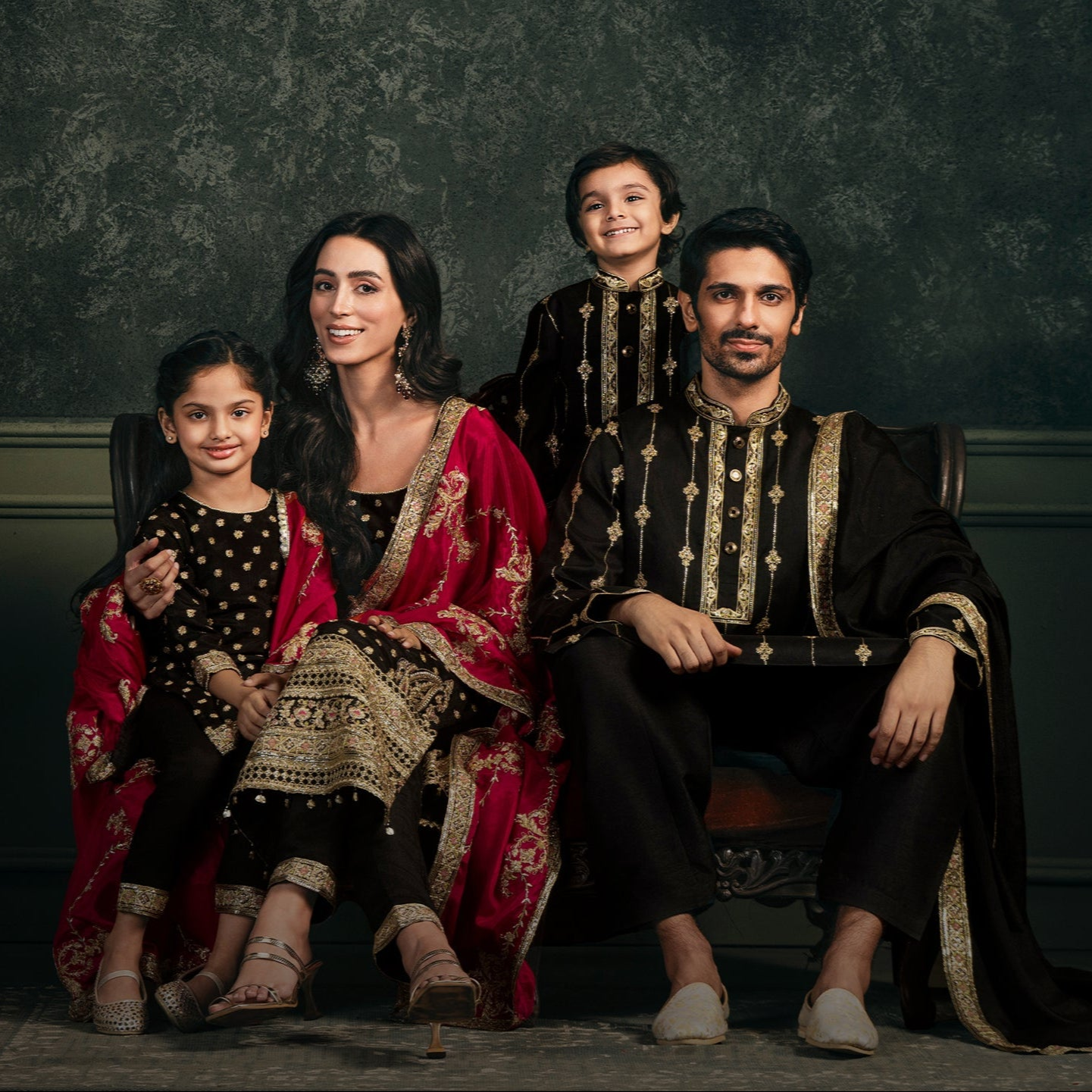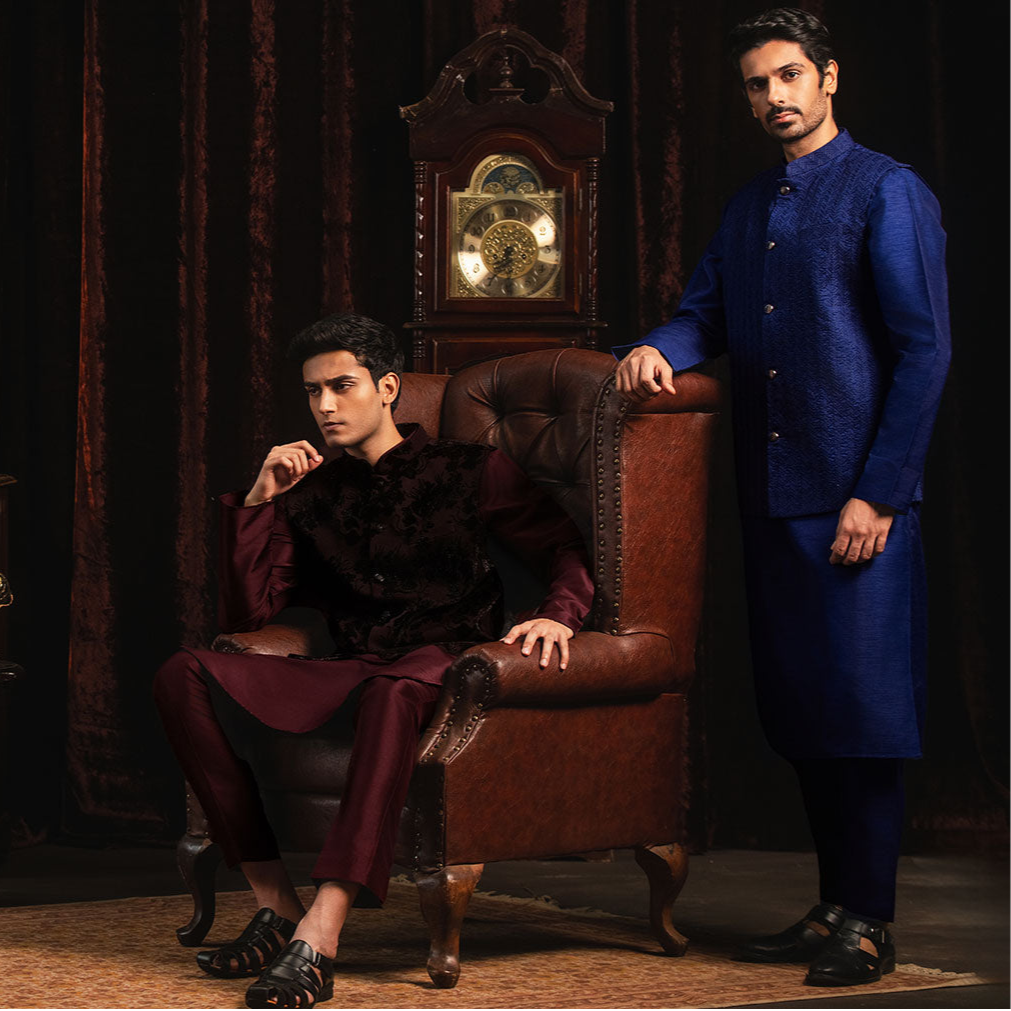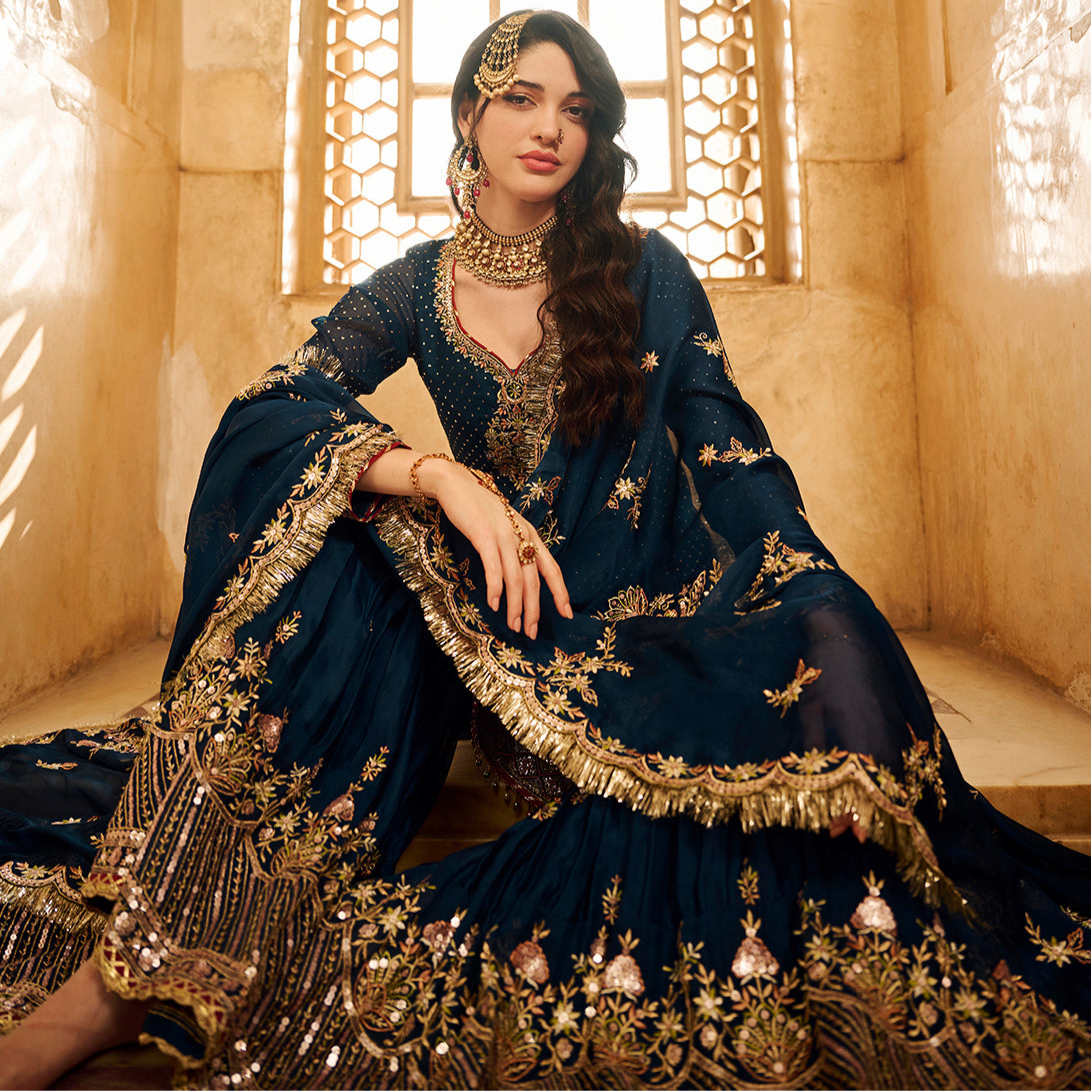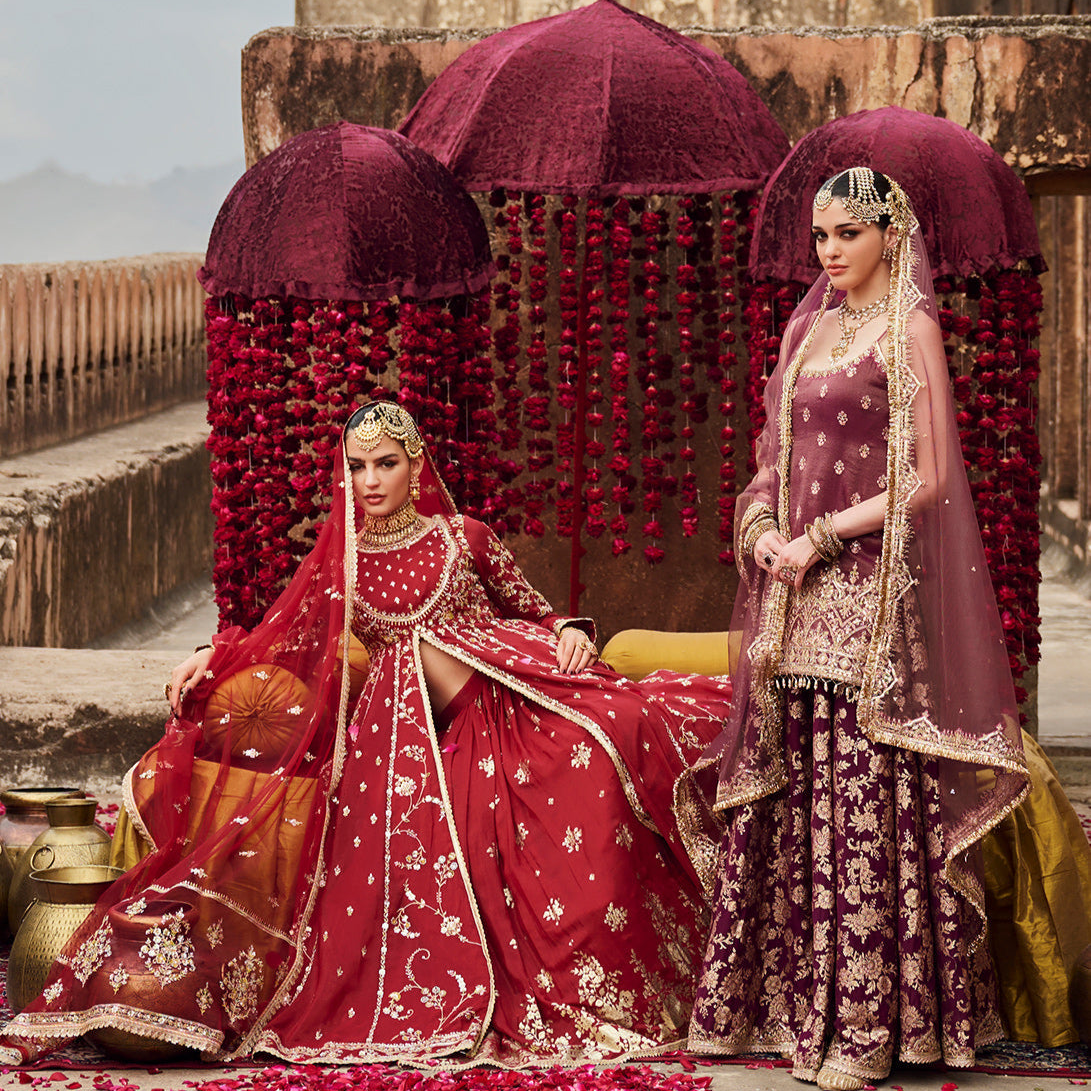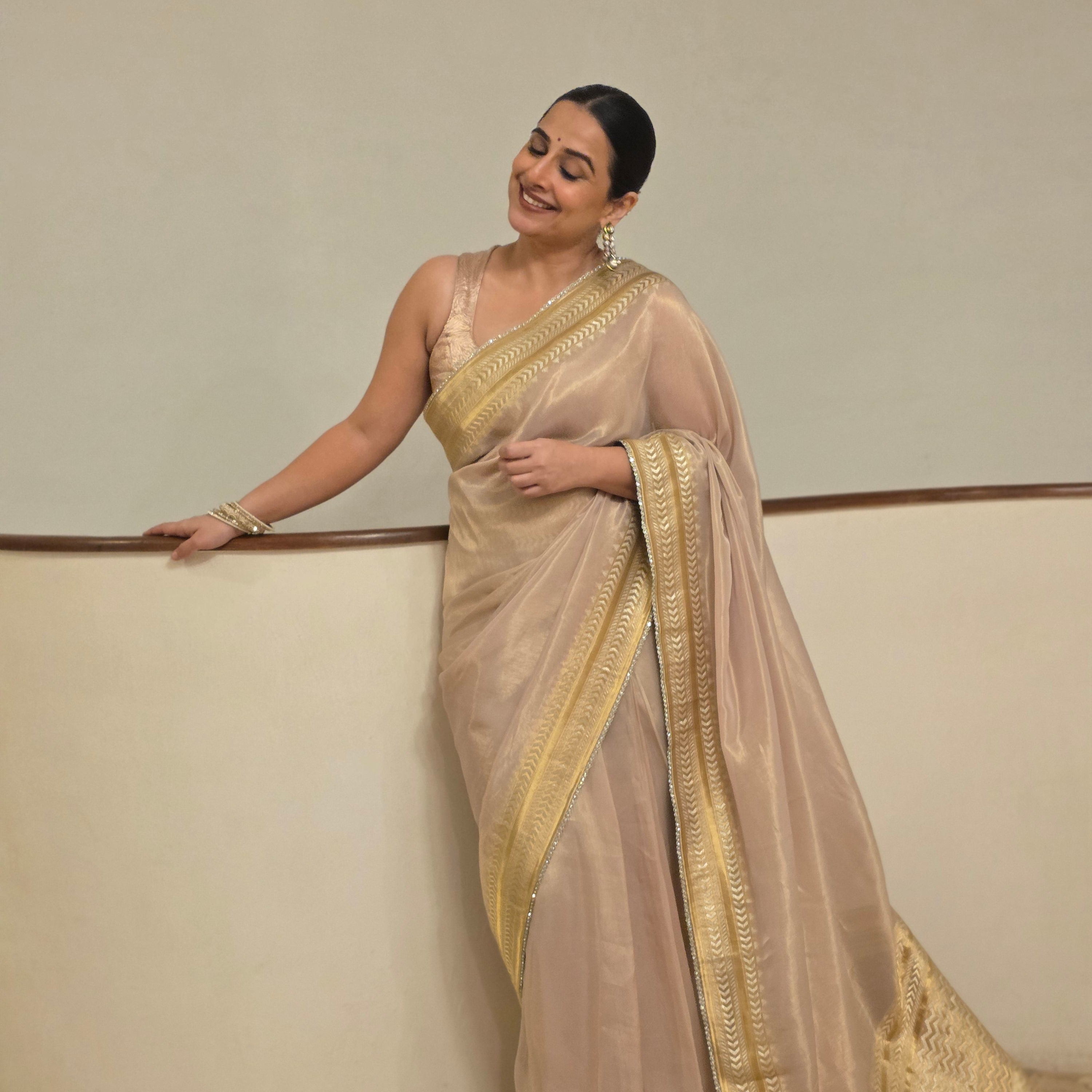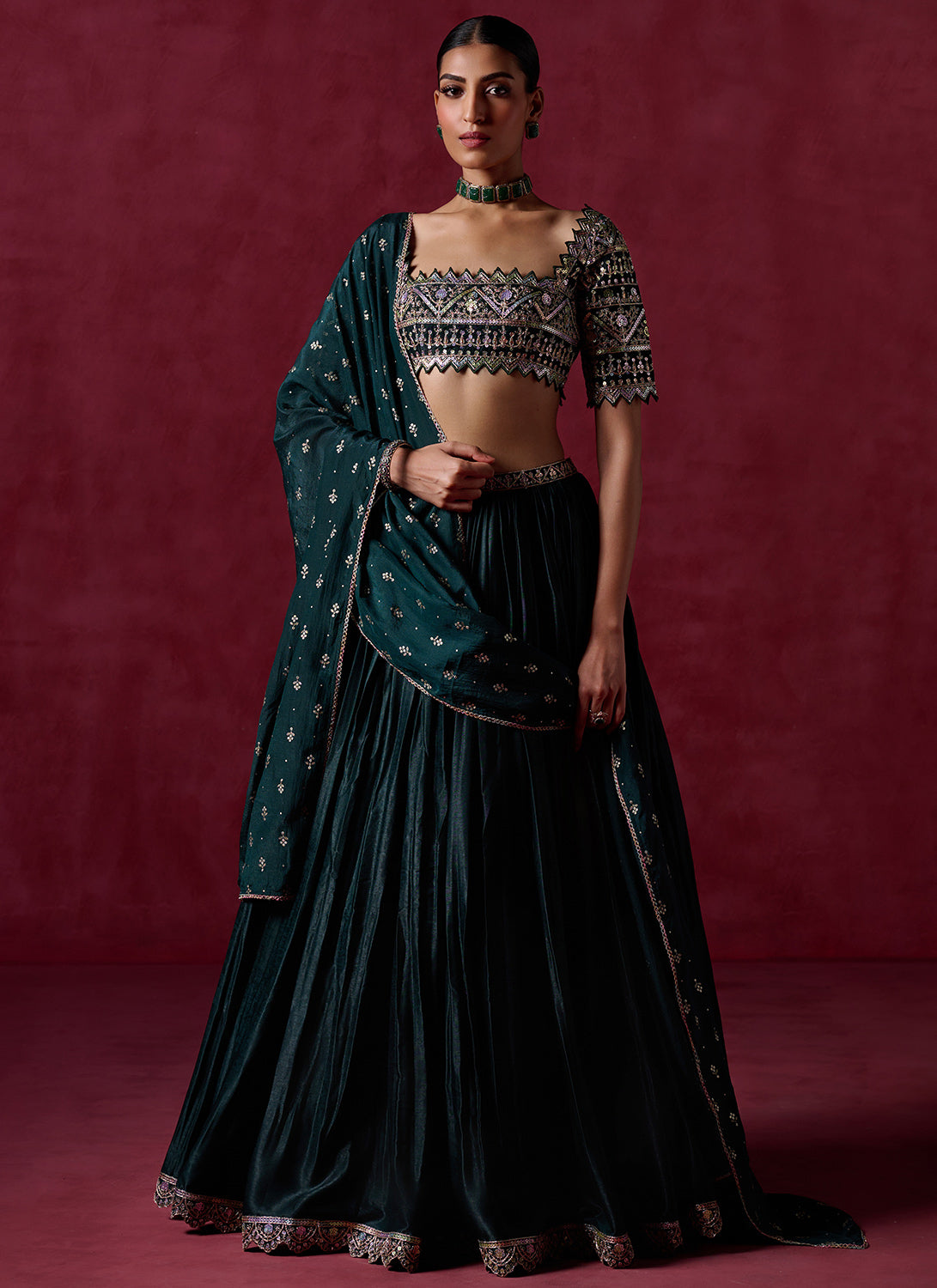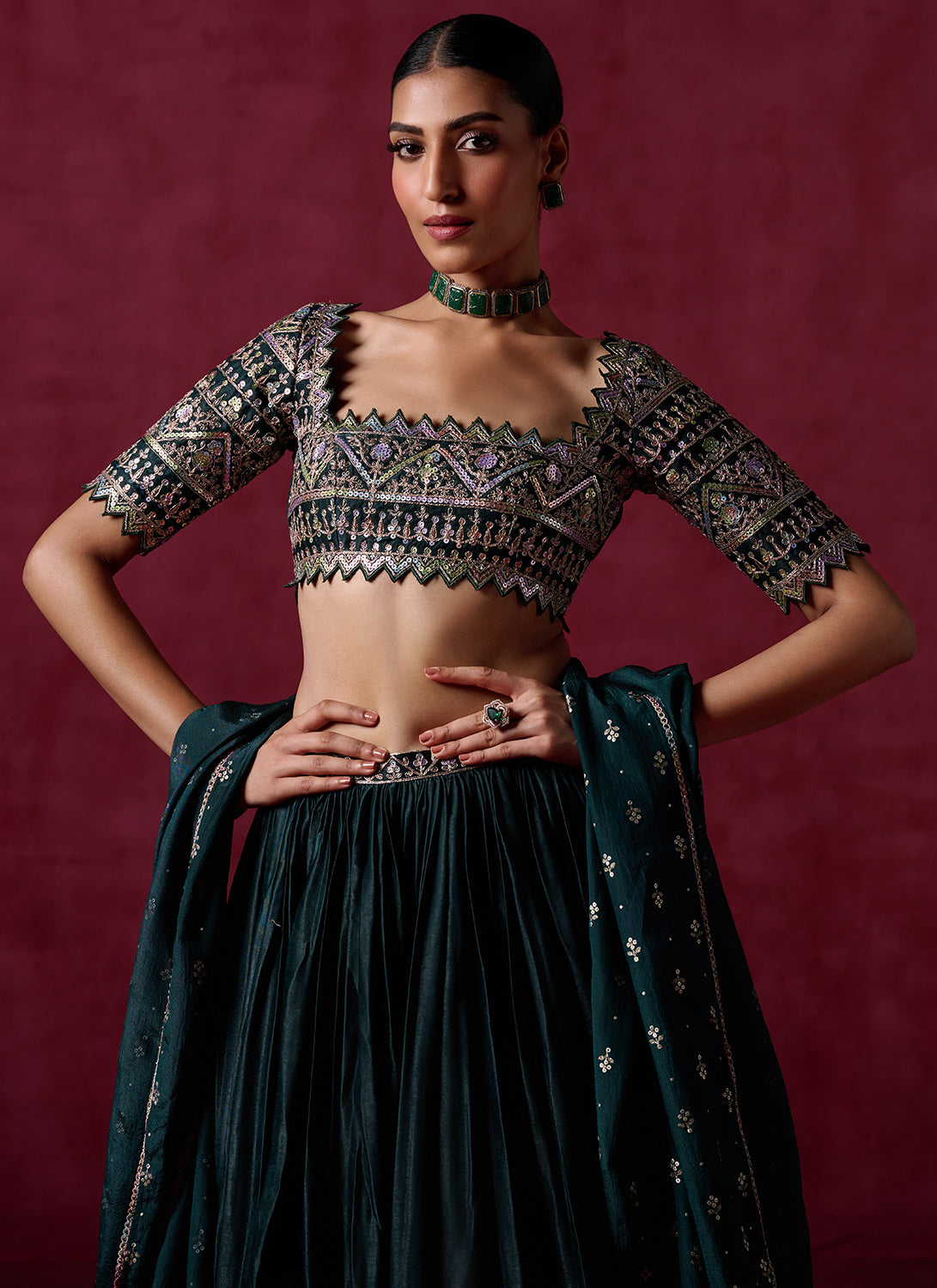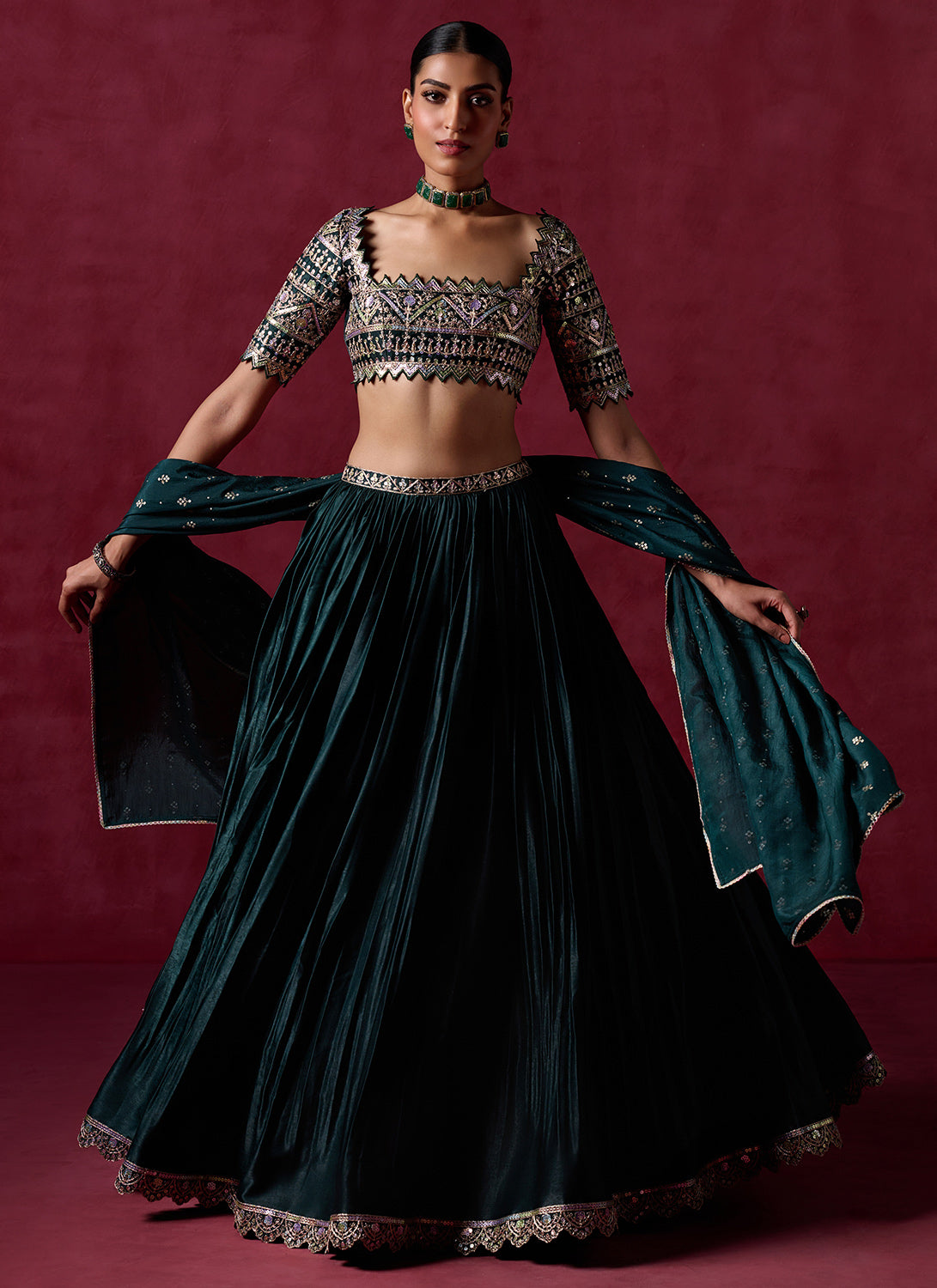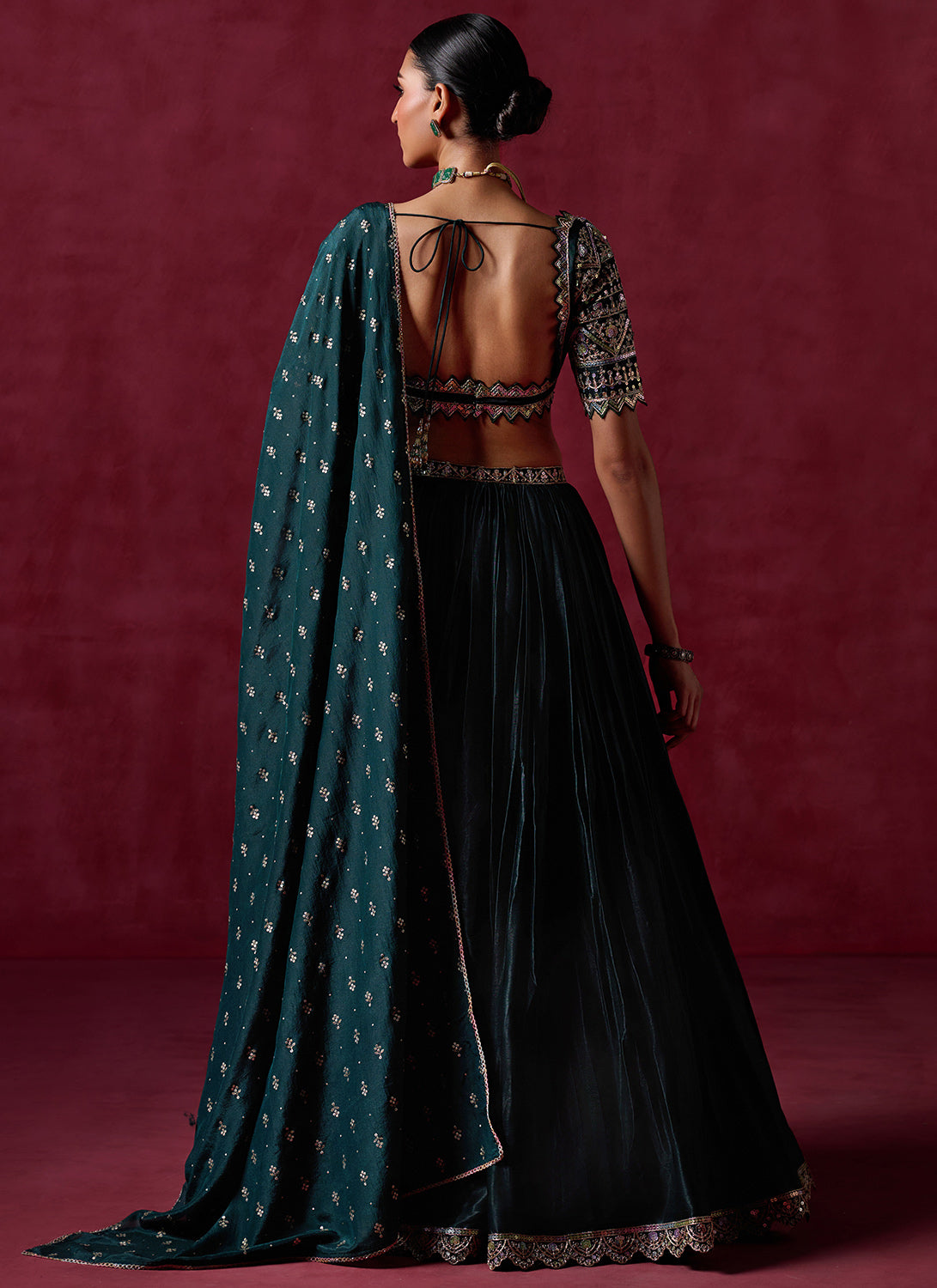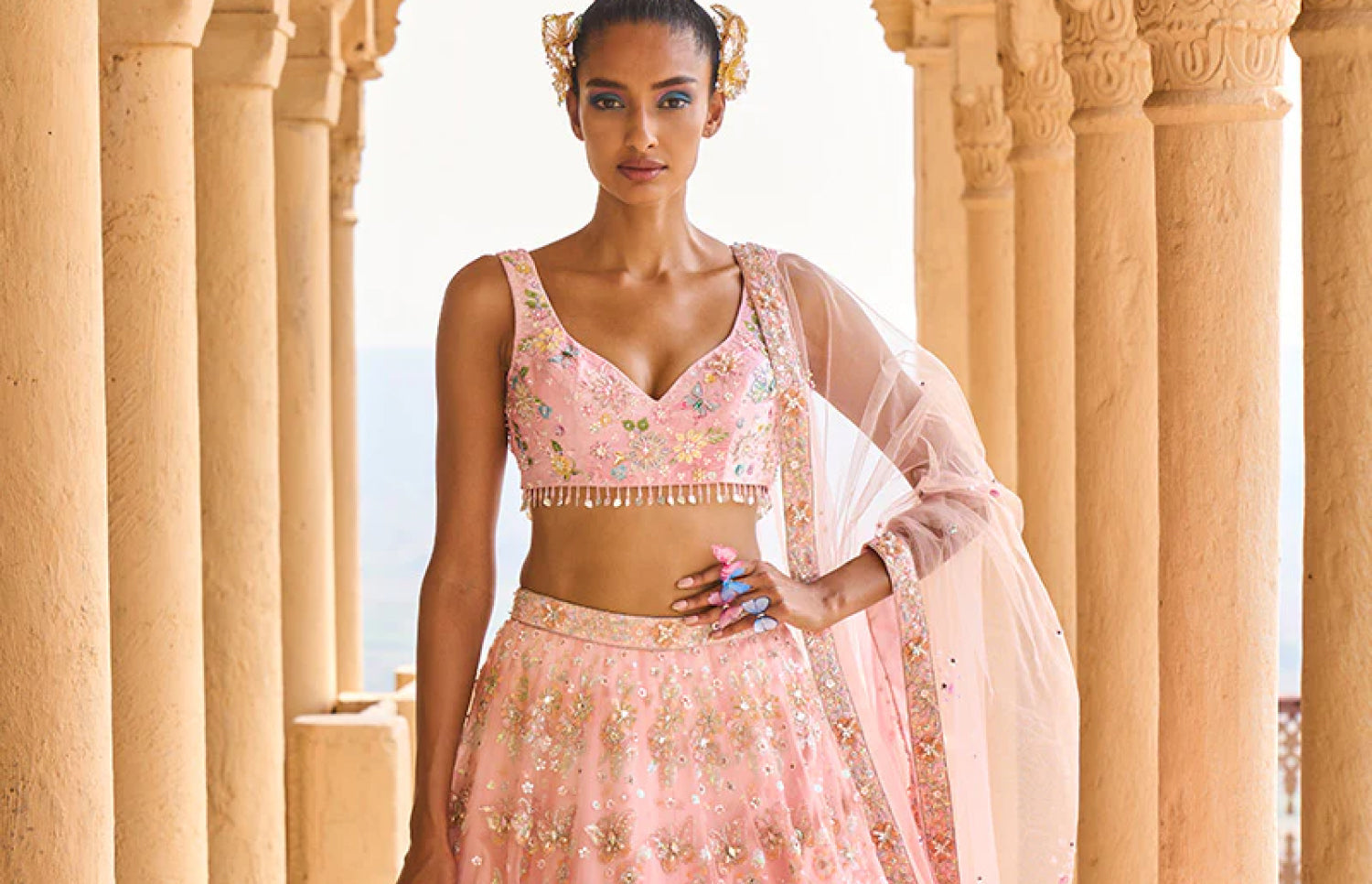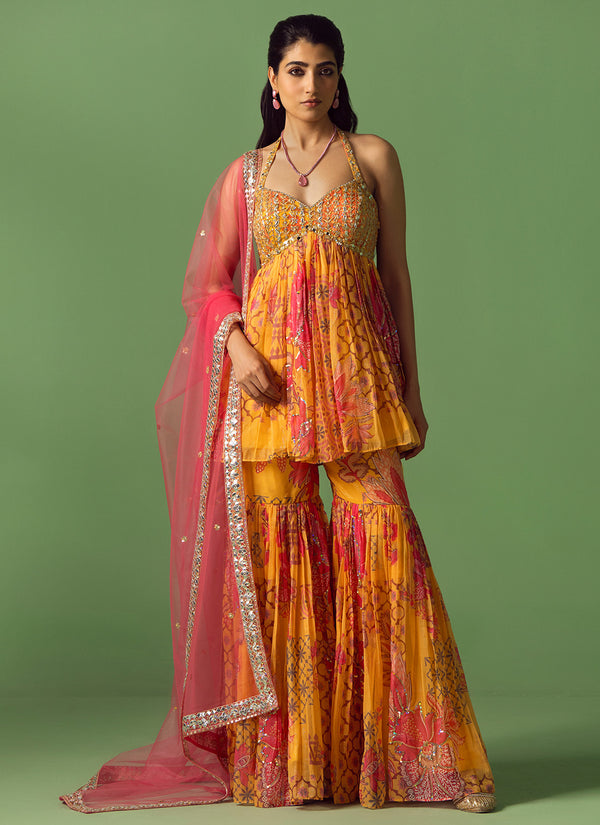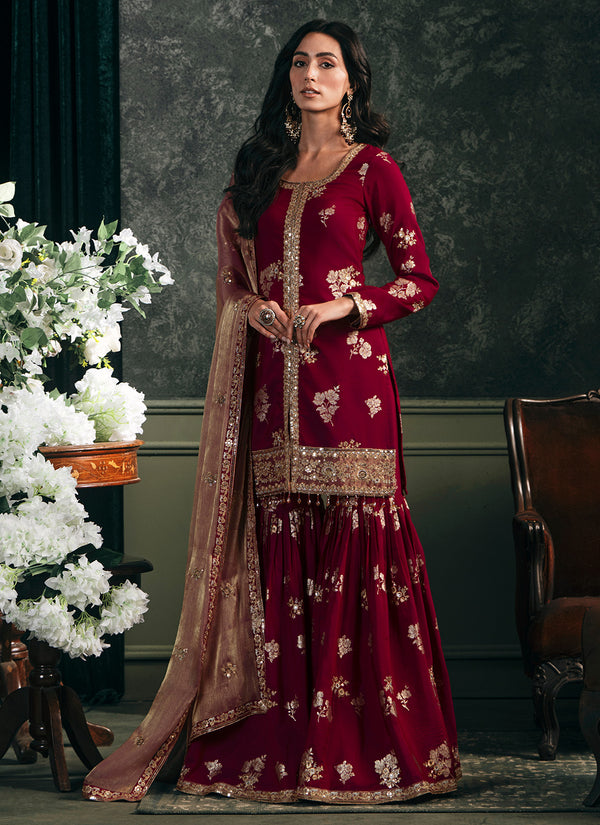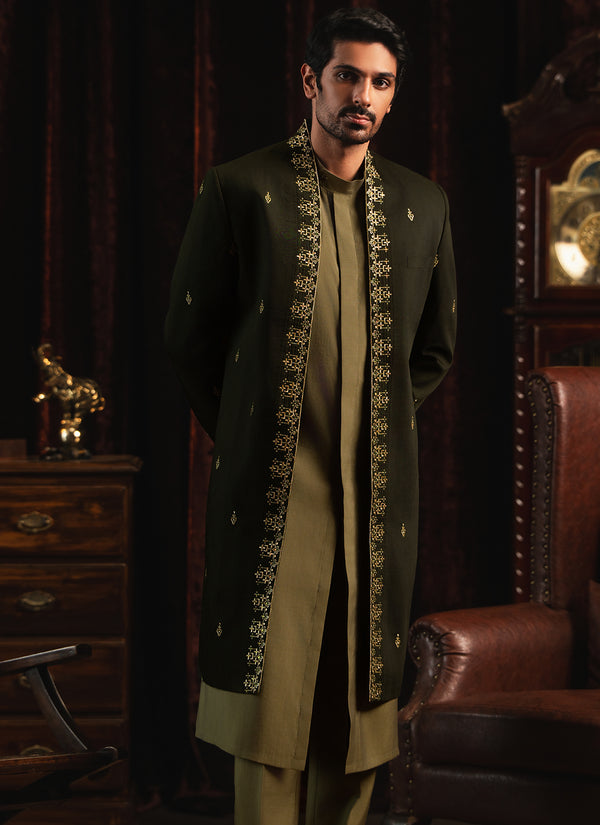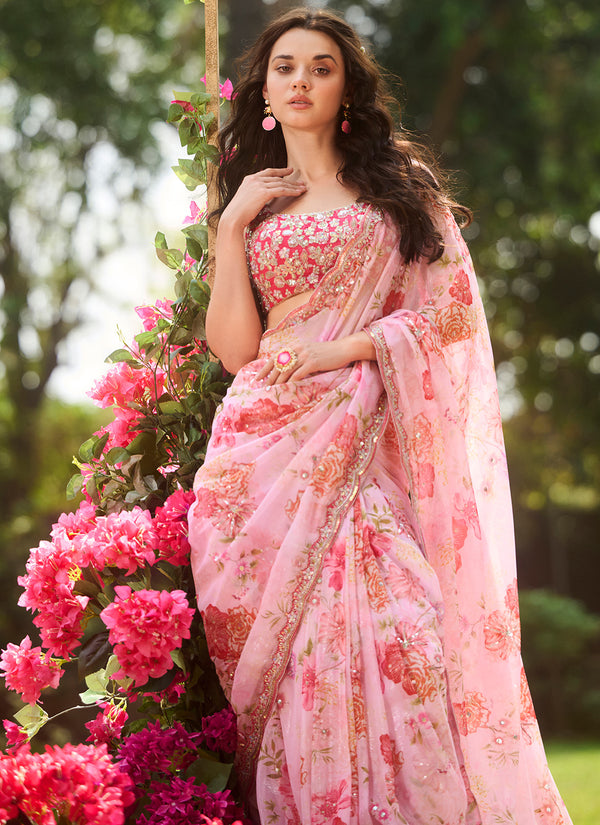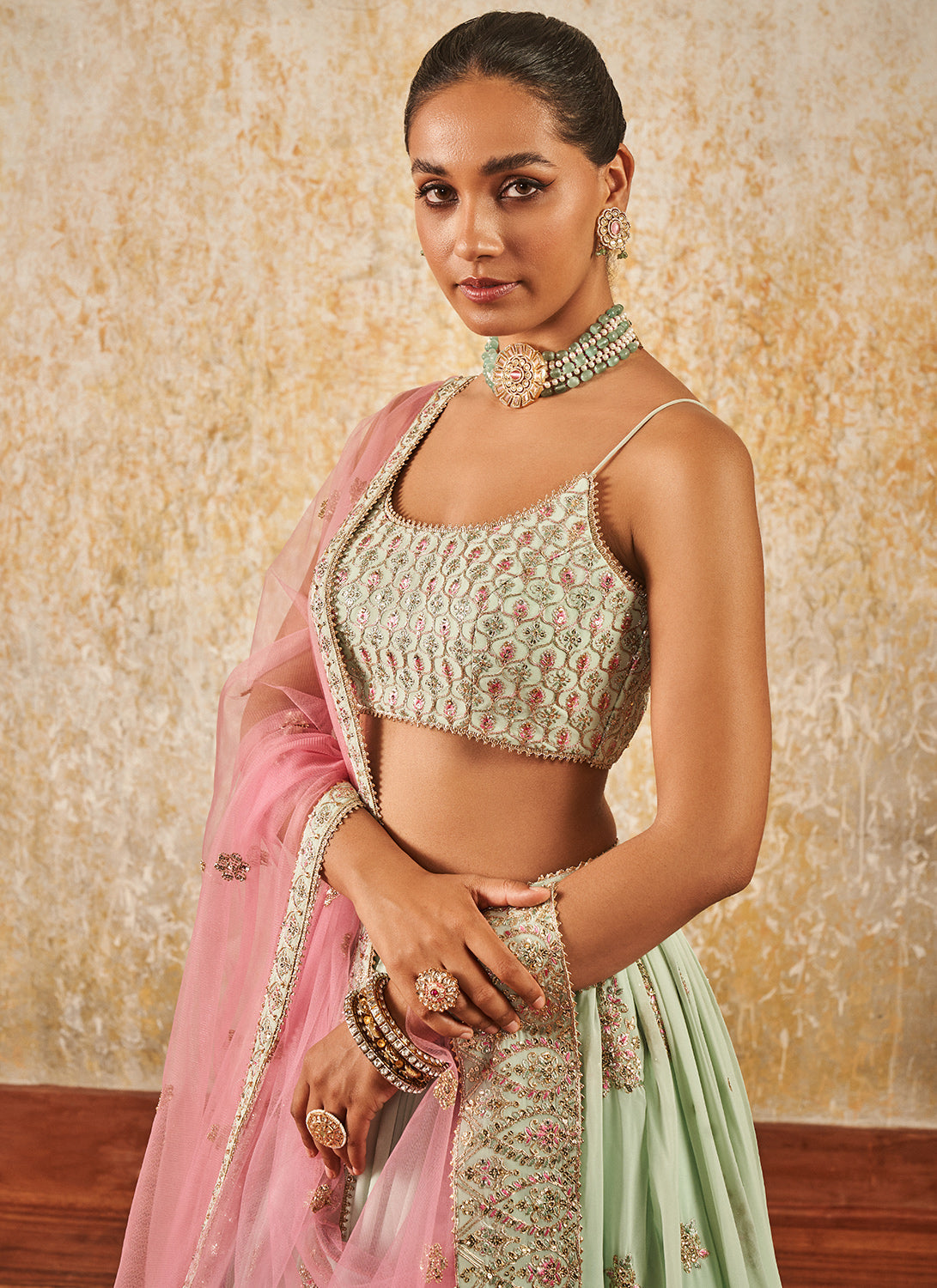
What Is Zari Work? India’s Timeless Embroidery Tradition
Zari work is a traditional Indian embroidery technique that uses fine metallic threads, typically gold or silver, to create intricate patterns on fabrics. This decorative art form is deeply rooted in Indian textile heritage and is known for its regal shimmer and intricate craftsmanship.
The word "zari" is derived from the Persian word "zarih," meaning gold. Historically, it involved threads made from pure gold and silver, which were beaten into fine wires and wound around silk yarns. These threads were then either woven into fabric or used for surface embroidery.
Unlike general embroidery, which may use colorful cotton or silk threads, zari work stands out for its luxurious feel and the use of metallic elements. It can be woven into the fabric on a loom or hand-embroidered to enhance garments with ornate motifs.
At Lashkaraa, you’ll find zari details woven into a wide range of elegant ensembles, from designer lehengas to Anarkali suits and festive salwar kameez sets.
Types of Zari and Different Techniques
Zari embroidery comes in many forms, each with its own texture, shine, and technique. From real gold thread to synthetic alternatives, and from elaborate handwork to woven styles, zari adapts beautifully across different fabrics and fashions.
Real vs. Faux Zari
Traditional zari was made from real gold or silver, flattened into thin wires and wrapped around silk threads. This type, known as "pure zari" or "kalabattu zari," was extremely expensive and mostly reserved for nobility or bridal trousseaus.
Today, faux zari, also known as imitation zari or "tested zari," utilizes metallic polyester, plastic-coated threads, or copper-based wires with gold or silver polish to mimic the original. While real zari offers unmatched richness and durability, faux zari is lighter, easier to maintain, and more affordable.
Hand Embroidery vs. Loom-Based Zari Weaving
Zari can be hand-embroidered or woven directly into the fabric. Zardozi embroidery, a type of hand-stitched zari work, creates raised, 3D patterns with thick metallic threads, often combined with pearls, sequins, and beads. This method is labor-intensive but delivers breathtaking depth and texture.
Loom-based weaving, on the other hand, integrates zari threads during the fabric-making process. This is commonly seen in brocades, Banarasi silks, Kanjivaram sarees, and tissue fabrics.
Fabrics Used in Zari Work
Common fabrics for zari embroidery include silk, velvet, chiffon, georgette, organza, and satin. The interplay of the metallic sheen on different bases yields a range of visual effects, from soft shimmer to bold luster.
Zari Work in Modern Fashion
In contemporary fashion, zari work remains a staple of bridal and festive wear. Designers often reimagine traditional motifs with modern silhouettes, blending cultural roots with today’s aesthetics. From Bollywood fashion styles to celebrity weddings, zari continues to shine in luxurious ensembles.
Zari detailing is now seen in Indo-Western gowns, fusion shararas, embellished jackets, kaftans, and even accessories like clutches and footwear. Designers like Sabyasachi, Abu Jani Sandeep Khosla, and Manish Malhotra have reinterpreted zari embroidery in their couture creations.
Our Grey Embroidered Silk Jumpsuit redefines traditional craftsmanship with a contemporary silhouette. Subtle yet striking, its intricate zari embroidery adds a touch of gold brilliance that catches the light with every movement. Woven with precision using metallic threads, the detailing draws inspiration from heritage Indian motifs, offering a fusion of old-world elegance and modern-day edge. Ideal for cocktail evenings, festive soirées, or fusion weddings, this piece proves that zari work isn’t limited to lehengas and sarees; it shines just as beautifully in bold, fashion-forward forms.
Lashkaraa frequently updates its new arrivals collection with garments that highlight zari’s timeless elegance—whether it’s a statement bridal lehenga, a regal Anarkali, or a classic sharara suit.
The History and Cultural Significance of Zari Work in India
Zari work in India has a long and storied past, tracing its roots back to the Mughal era. The technique flourished under royal patronage, where it was often used to embellish robes, turbans, and court attire with gold and silver thread.
Even earlier, some historians believe rudimentary forms of zari-like embellishments may have been practiced during the Vedic period, where ceremonial attire featured metallic accents. However, it was under the Mughals that zari work truly became an elite art form.
Delicate yet decadent, Lashkaraa's Off White Embroidered Gharara Suit is adorned with fine zari work that lends a soft, luminous sheen to its elegant silhouette. The metallic threads are intricately woven into floral and geometric motifs, highlighting the suit’s timeless appeal. Rooted in traditional Indian embroidery techniques, the zari detailing adds a layer of sophistication that makes this ensemble ideal for intimate celebrations, festive gatherings, or pre-wedding rituals. It’s a graceful nod to heritage, brought to life in a refined, modern palette.
Cities like Varanasi, Hyderabad, Surat, and Lucknow became renowned centers for zari craftsmanship, each developing its own signature style and technique. Varanasi, home to the famous Banarasi saree, is known for its rich brocade fabrics woven with gold and silver zari. Hyderabad specializes in zardozi, a raised, more elaborate form of zari embroidery often used in bridal and ceremonial wear.
Surat emerged as a hub for manufacturing both real and imitation zari threads, supplying artisans nationwide. Lucknow, traditionally known for chikankari, incorporates fine zari detailing into its delicate hand embroidery, creating a unique fusion of finesse and shimmer. These regions nurtured generations of artisans, transforming zari work into a living symbol of India’s textile opulence, heritage, and cultural identity.
Zari Work in the Mughal Era

During the Mughal period, zari embroidery reached new heights of refinement. Skilled artisans were employed to create richly adorned fabrics for the royalty, often combining zari with precious stones and pearls. Fabrics like silk, velvet, and muslin became canvases for elaborate scenes, floral vines, and paisley motifs, symbolizing prosperity and divine blessings.
Rich in color and craftsmanship, the Bottle Green Embroidered Silk Lehenga is elevated by intricate zari work that gleams against the luxurious silk base. The gold-toned embroidery showcases traditional floral and architectural patterns, evoking the opulence of Mughal-era design. This lehenga celebrates the heritage of Indian textile artistry, where zari threads transform fabric into a canvas of elegance. Perfect for weddings, receptions, or grand festive occasions, it offers a timeless blend of regal charm and modern sophistication.
Zari’s Role in Indian Weddings and Festive Wear
Zari work is inseparable from Indian weddings and celebrations. Brides often choose lehengas, sarees, or salwar kameez sets adorned with zari for its luminous, festive appeal. It's also a staple in garments worn during Diwali, Eid, Raksha Bandhan, Navratri, and other cultural festivals, symbolizing prosperity, grandeur, and elegance.
Crafted with exquisite zari embroidery, the Teal Green Embroidered Lehenga blends traditional artistry with modern elegance. The intricate gold threadwork shimmers across the rich fabric, adding a regal touch that’s perfect for festive and bridal occasions. Each motif is a tribute to the age-old technique of zari work, once reserved for royalty and now reimagined in contemporary silhouettes. Whether you're drawn to its heritage or its high-shine appeal, this lehenga captures the timeless beauty of Indian craftsmanship.
Heirloom pieces with zari detailing are often passed down through generations, becoming an integral part of a family's legacy.
Zari Work FAQs
-
What is the difference between zari and zardozi?
Zari refers to metallic threads used in weaving and embroidery work. Zardozi is a more elaborate form of hand embroidery designs that utilizes zari threads, along with beads and sequins, to create raised patterns. Zardozi is considered more textured and dimensional compared to flat zari embroidery. -
Is zari work only used in bridal wear?
Not at all. Zari work also enhances festive dupattas, blouses, sarees, kurtas, formal ethnic outfits, and even modern Indo-fusion garments. It adds glamour and sophistication for special occasions beyond just bridal ensembles. -
How can I care for garments with zari embroidery?
Dry clean only. Store in a cool, dry place, wrapped in muslin, to prevent moisture. Avoid folding garments along heavily embroidered areas to prevent thread breakage. Air occasionally to prevent tarnishing. Use acid-free tissue paper for long-term storage. -
Is real zari still used today?
Yes, though it's rarer due to cost. Some high-end bridal and ceremonial pieces still utilize real zari, particularly in regions with skilled artisan clusters, such as Varanasi and Surat. These pieces are often customized and cherished as heirlooms. -
Where is zari work most popular in India?
Zari craftsmanship thrives in Varanasi (Banarasi textiles), Hyderabad (zardozi), Surat (industrial zari thread production), and Lucknow (chikankari with zari). These cities are renowned for preserving traditional techniques and integrating them with modern applications.
Zari Work: A Shimmering Thread Through Time
Zari work is more than just ornamental embroidery—it’s a living legacy of Indian artistry, culture, and history. Its signature shimmer connects generations of craftsmanship with modern design, making every zari-adorned piece a radiant celebration of heritage and tradition.
Whether you are drawn to its royal origins, symbolic meaning, or its elegant use in contemporary silhouettes, understanding zari enriches your appreciation for the depth and beauty of traditional Indian fashion.
Shop Lashkaraa's Gulbahar Collection below for some of our zari summer designs that honor traditional zari embroidery while embracing the aesthetics of today’s style.
Sources:
Indian Textiles: 1,000 Years of Art and Design | The George Washington University Museum
The Untold Story Of The Art Of Zari | Priya Chaudhary
Difference Between Zari and Zardozi | Indian Couture

